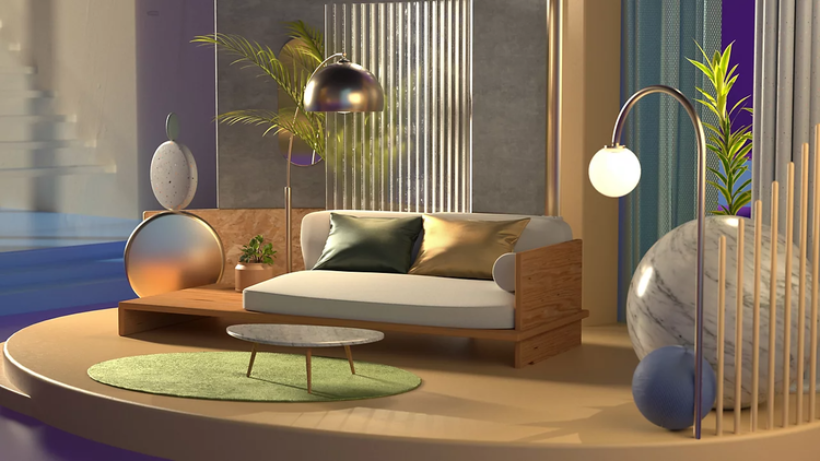Introduction
Digital design has grown far beyond sketches and static images. Today, 3d rendering powers architecture, product design, films, and games. It allows creators to show ideas in vivid detail before production begins.
But how does it work? What are the benefits? And how much does 3d rendering cost per hour? This article explains the process, highlights advantages, and explores pricing so you can plan projects with confidence.
What Is 3D Rendering?
At its core, 3d rendering is the process of converting a 3D model into a lifelike image or animation. Specialized software simulates light, shadows, and textures to make designs look real.
This technique is used across industries. Architects show clients their future buildings. Product designers market items before they exist. Game developers bring characters and worlds to life. Marketers and advertisers use realistic visuals to engage customers.
Simply put, it is the bridge between imagination and reality.

The Workflow of 3D Rendering
The process follows a structured workflow. Each step adds detail and realism.
1. Modeling
The journey begins with creating a digital model. Artists build the geometry of objects or scenes in software such as Blender, Maya, or Cinema 4D.
2. Texturing
Next, surfaces receive textures and materials. Wood, glass, fabric, or stone all come alive here. Without textures, it looks flat.
3. Lighting
Lighting defines mood and realism. Designers position virtual lights to mimic natural or studio setups. Good lighting enhances depth, while poor lighting weakens the result.
4. Camera Setup
Like photography, camera placement matters. Angles, focal length, and depth of field determine how the scene feels.
5. Rendering Process
The computer calculates everything — light bounces, shadows, and reflections — to generate the final image. This stage can take minutes or hours depending on complexity.
6. Post-Processing
Finally, the image is polished. Adjustments in brightness, contrast, and effects add the finishing touch. This step ensures the process looks professional.
Key Benefits of 3D Rendering
Realistic Visualization
It allows clients to see projects before they are built or manufactured.
Faster Decisions
Stakeholders can compare options and approve designs quickly. As a result, projects move forward without delays.
Cost Efficiency
Catching errors early reduces expensive mistakes in construction or production.
Marketing Advantage
High-quality visuals can be used in brochures, websites, and ads. Therefore, 3d rendering doubles as a design and marketing tool.
Flexibility
Colors, materials, or layouts can be changed instantly. That makes iterations easier and cheaper than physical prototypes.
Types of 3D Rendering
Different projects call for different render types.
- Still Images: Single high-resolution shots.
- Animations: Sequences that show movement.
- Real-Time Rendering: Interactive experiences for games and VR.
- 360 Views: Rotatable models for web and product showcases.
Together, these make 3d rendering versatile across industries.
3D Rendering Cost per Hour
One of the most common questions is about pricing. How much does 3d rendering cost per hour? The answer varies depending on several factors.
Project Complexity
Simple models render quickly. Highly detailed scenes with reflections, particles, or large textures take longer. Therefore, more complex projects increase the 3d rendering cost per hour.
Hardware and Software
Studios with advanced GPUs deliver faster results. They may charge higher rates, but time savings often balance the expense. Licensing fees for engines like V-Ray or Redshift can also influence costs.
Location
Rates differ worldwide. North American studios may charge $50–$100 per hour. In Asia or Eastern Europe, rates can be as low as $10–$25. Outsourcing can reduce the average 3d rendering cost per hour significantly.
Quality Requirements
Photorealistic renders demand more computing power and expertise. As a result, high-end visuals cost more than simple conceptual images.
Common Pricing Models
Studios and freelancers use different structures.
- Hourly Rates – Many charge by the hour, with the 3d rendering cost per hour set by skill level and region.
- Per Project – A flat fee for defined deliverables. The studio estimates hours internally.
- Per Image or Animation – A set cost per output, such as $200 per still image.
- Subscription or Cloud Plans – Access to rendering servers for a monthly fee, ideal for heavy users.
How to Keep Costs Under Control
You can reduce expenses without losing quality.
- Optimize Models: Remove unnecessary details.
- Use Efficient Textures: Apply lower resolution where possible.
- Plan Clearly: Fewer revisions save both time and money.
- Leverage Cloud Rendering: Rent GPU power only when you need it.
These steps lower the effective 3d rendering cost per hour and help you stay on budget.
>>> Read more: The Ultimate Blender 3D Rendering Workflow: From Scene to Final Image
When to Consider Cloud Rendering
Local machines can struggle with heavy projects. Long renders waste time and slow productivity.
Cloud services solve this issue. Platforms like 3S Cloud Render Farm let you upload your files and access hundreds of GPUs. You pay only for what you use. This approach reduces waiting time and makes costs predictable.
For freelancers and studios alike, cloud solutions balance speed and budget better than constant hardware upgrades.
Final Thoughts
3d rendering is no longer a luxury — it’s a necessity. It helps designers, architects, and marketers present ideas clearly and convincingly. It also saves time, reduces mistakes, and creates powerful visuals for campaigns.
Understanding how 3d rendering cost per hour is calculated allows you to budget smarter. Costs depend on project size, quality, and location. But thanks to cloud services like 3S Cloud Render Farm, anyone can access top performance without huge upfront investment.
Whether you’re an architect designing skyscrapers or a freelancer creating product ads, mastering 3d rendering gives you the power to turn ideas into reality.